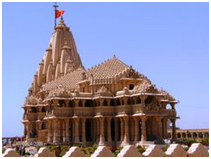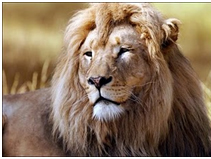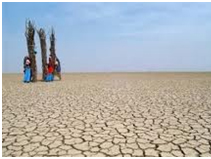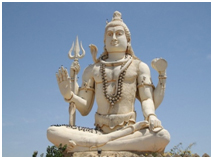|
History and Geography
The history of Gujarat goes back to 2000 BC. It is believed that God Lord Krishna left Mathura to settle on the west coast of Saurashtra which later came to be known as Dwarka, the gateway. Later it saw various kingdoms: Mauryas, Guptas, Pratiharas and others. It was during the rule of Chalukyas (Solankis) that Gujarat witnessed progress and prosperity. In spite of the plunderings of Mahmud Ghazani, the Chalukyan kings were able to maintain general prosperity and well-being of the State. After this glorious respite, Gujarat faced troubled times under the Muslims, Marathas and the British Gujarat, became a part of the biggest bilingual State of Bombay. The present State of Gujarat came in to being on 1 May 1960.
It is situated on the west coast of India. The state is bounded by the Arabian Sea on the west, Pakistan and Rajasthan in the north and north-east respectively, Madhya Pradesh in the south-east and Maharashtra in the south.
Tourist Attraction in Gujrat
SOMNATH TEMPLE :
The Somnath Shore temple is quite legendry and is among the sacred shrines of the country. According to somnath temple facts, it has been said to be created by the Moon God, according to legends. Although, throughout the years, the temple has been ravaged by plunderers and attackers about seven times, it was built every time by the Indian kings. The present temple is said to be built about 25 years ago in the same plan as the original temple and is known as the Maha Meru Prasad temple. Because of its dedication to Lord Shiva, the temple is actually quite famous. The somnath temple facts also say that some thousand years ago, the temple was having huge amount of wealth as was said by someone named Al Biruni in his writings. Learning of the vast wealth, Mahmud of Ghazni attacked the temple in 1026 and plundered it and went away with loads of jolds and jewels on camels to Afganistan. During the next 700 years, the temple was built and destroyed three times. But in 1950, the temple was built again in the nearby site and is one of the most revered Shiva temples of present century. |
 |
GIR FOREST :
Gir National Park & Wildlife Sanctuary comprises 1412 sq km of deciduous forest interspersed with semi-evergreen and evergreen flora, acacia, scrub jungle, grasslands and rocky hills. Fed by perennial and seasonal rivers and streams, the sanctuary has large water bodies like the Kamleshwar Dam that are good for crocodiles and birds. The Gir Forest National Park and Wildlife Sanctuary also known as Sasan-Gir. Established in 1965, with a total area of 1412 km² (about 258 km² for the fully protected area (the national park) and 1153 km² for the Sanctuary), the park is located 65 km to the south-east of Junagadh and 60 km to south west of Amreli.
It is the sole home of the pure Asiatic Lions (Panthera leo persica) and is considered to be one of the most important protected areas in Asia due to its supported species. The ecosystem of Gir, with its diverse flora and fauna, is protected as a result of the efforts of the government forest department, wildlife activists and NGOs. The forest area of Gir and its lions were declared as "protected" in the early 1900s by the then Nawab of the princely state of Junagadh. This initiative assisted in the conservation of the lions whose population had plummeted to only 15 through slaughter for trophy hunting.
The April 2010 census recorded the lion-count in Gir at 411, an increase of 52 compared to 2005. The lion breeding programme covering the park and surrounding area has bred about 180 lions in captivity since its inception.
|
 |
KUTCH :
Kutch district (also spelled as Kachchh) is a district of Gujarat state in western India. Covering an area of 45,652 km it is the largest district of India.
Kutch literally means something which intermittently becomes wet and dry; a large part of this district is known as Rann of Kutch which is shallowwetland which submerges in water during the rainy season and becomes dry during other seasons. The same word is also used in the languages ofSanskrit origin for a tortoise and garments to be worn while having a bath. The Rann is famous for its marshy salt flats which become snow white after the shallow water dries up each season before the monsoon rains.
Kutch is divided into 5 distinct regions:
(i) The Great Rann, or uninhabited wasteland in the north,
(ii) The Grasslands of Banni,
(iii) Mainland, consisting of planes, hills and dry river beds,
(iv) The Coastline along the Arabian Sea in the south, and
(v) Creeks and mangroves in the west. More loosely, the southern portion of the Rann is considered an island, with seawater inundating the land for most of the year. The mainland is generally plane, but has some hill ranges and isolated hills.
|
 |
DWARKA :
Dwarka city is situated in the extreme west of the Indian state of Gujarat in the Saurashtra peninsula on the Arabian Sea. It lies on 20°22' north latitude and 69°05' east longitude. The city is built on the right bank of Gamut creek.
Dwarka Mandir is an important pilgrimage center. It is steeped in legends, being associated with the life of Lord Krishna. In Puranic times, the present-day Dwarka city was known as Kushasthali or Dwaravati and enjoyed pride of place as the most important spot on the Saurashtra coast. It is said that Lord Krishna, after slaying Kansa, left his abode at Mathura and traveled with the entire Yadava community to the coast of Saurashtra where he founded a town and named it Swarnadwarika.
|
 |
|

